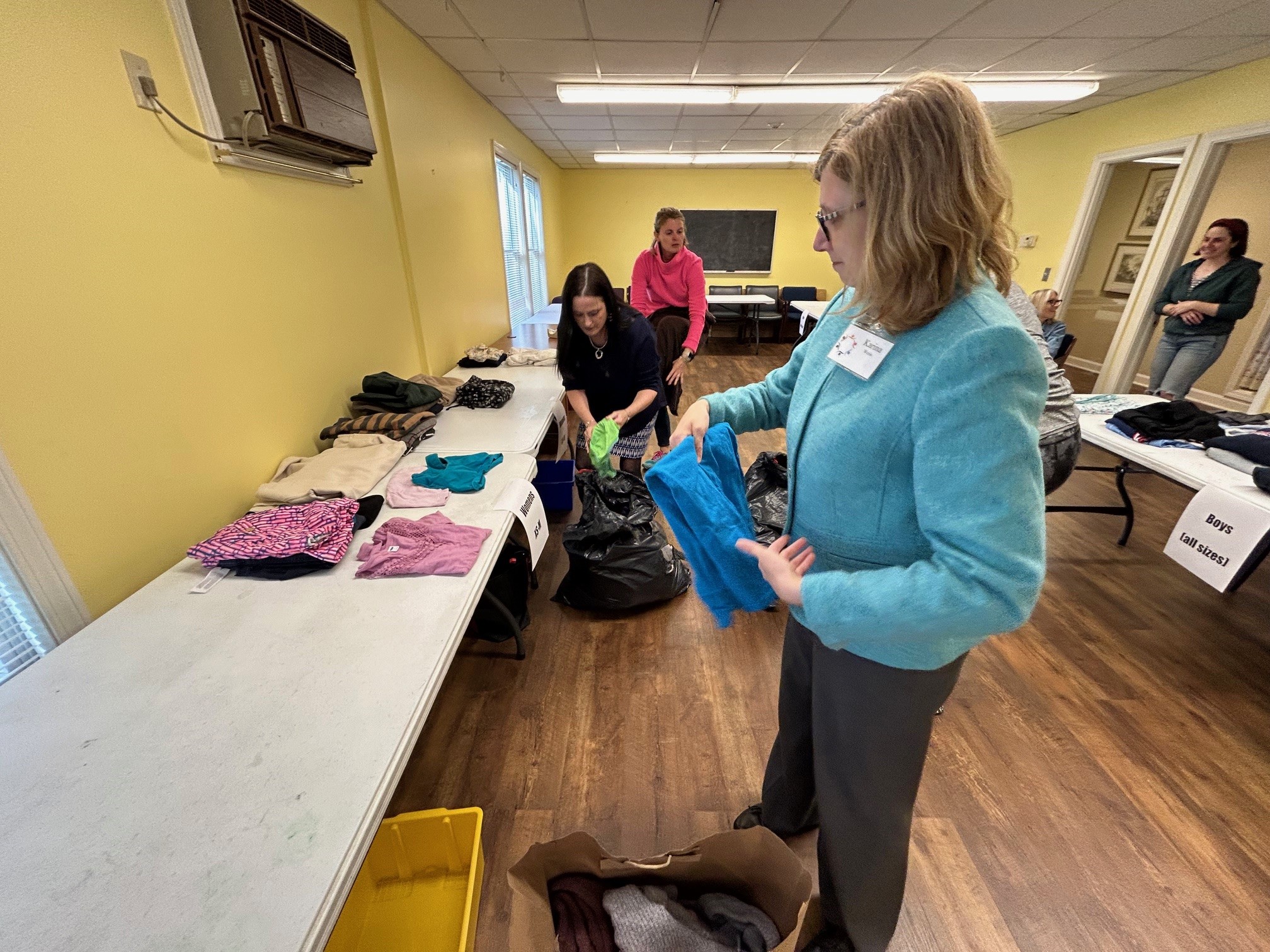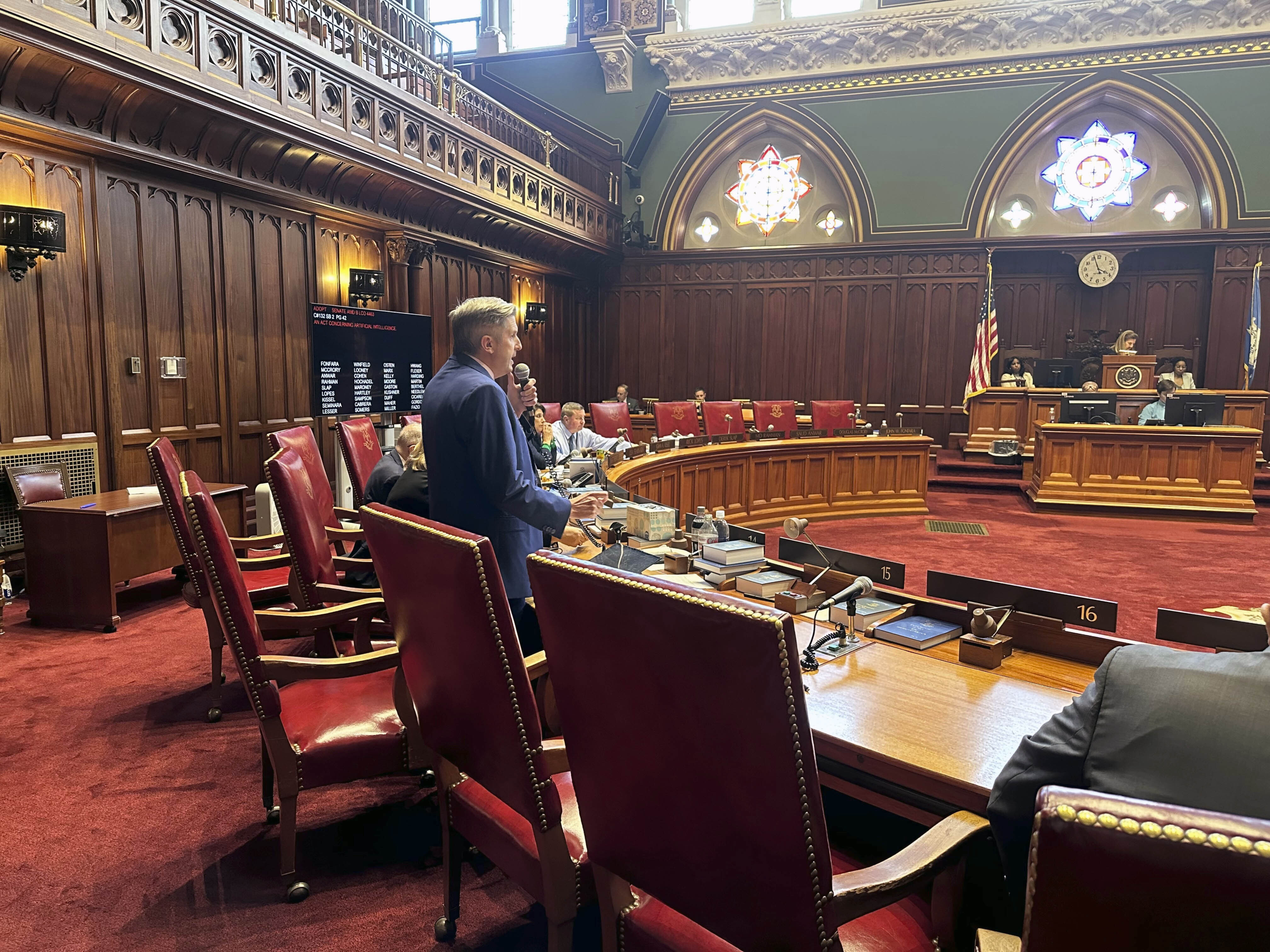“It’s very difficult. It’s very very difficult,” said Maria Martinez of New Britain.
Martinez’s 11-year-old daughter Isabella is in fifth grade. Martinez said she’s hit her homeschooling limit.
“Can they just pass all the kids already?” she asked.
Martinez said that Isabella had about two weeks-worth of work to catch up on because her family didn’t have internet in their home when the pandemic started. It was an extra expense for Martinez, who was laid off from her retail job.
The district estimates that 10 percent of their student body, about 1,000 students, don’t have access to the internet, which puts them at a disadvantage during online learning.
“Parents can drive to parking lots in the schools and connect. That’s not optimal and that’s not equitable,” said New Britain Schools Superintendent Nancy Sarra.
Sarra said her goal is to get internet access and laptops to every student in the district, but it probably won’t happen before the school year ends. Right now, kindergarten through eighth graders have one computer per household.
Local
“You have a family who may have three or four children in the ages of kindergarten through eighth grade sharing a device,” Sarra explained.
Sarra said funding has created a purchasing challenge.
One New Britain parent says she was forced to pick up the tab when the device her daughter, a high school senior, was given by the school district didn’t work.
“It’s been very stressful,” said Gina Arauz.
At the beginning of the pandemic the state of Connecticut announced it would be purchasing 60,000 laptops through a donation. Sarra said those have yet to arrive.
“My goal is to have, by September, every student connected in a more permanent way than what we’re doing right now,” she said, pointing to potential plans to not to have students fully in classrooms at the start of the next school year. “You have to plan for the worst and hope for the best, and I’m not saying distance learning is the worst.”
Engagement Issues
The Waterbury School Board recently learned that a third of their students have not signed in to distance learning.
“That was shocking because now we put a number on the number of children who are not engaged,” said school board vice president Karen Harvey. "They’re already dealing with equity issues in terms of fairness, access to the web, access to chrome books, access to other things and the poverty rate that we’re dealing with. So we know that they’re dealing with that already, so to add that they’re not being educated is alarming.”
Harvey said she’s making it her mission to see that the district connects with those students before the school year ends.
“We need to look outside the box to find out and to get to these students,” she said.
The district estimates it is still trying to make contact with 3,060 students.
Educators in poverty-stricken school districts say funding is key to keeping kids on a level playing field.
“Next year some of these kids might come to their next grade level and still be at a level where they were prior to. It’s unfortunate,” said Franco Cartiera, a science, technology, engineering, art, and math, or STEAM Teacher. “I think with us, especially our district who doesn’t get the funds we deserve, I feel, and we don’t have necessarily a one-to-one computer ratio, it is going to be difficult. Districts like ours definitely deserve to get more funding for that. I think it’s crucial.”
Some parents say their students thrive in the classroom. Homeschooling has been difficult for those types of learners.
“She doesn’t like interacting with a computer. She’d rather interact with a teacher,” said Arauz.
“My daughter’s more of a visual person. So, it’s been difficult because I didn’t go to school to be a teacher,” added Martinez.
They both said they worry about the learning gap long distance schooling has created.
It’s on Sarra’s radar as well.
“It is concerning. I’m not going to say it’s not concerning. I think we can speculate but we won’t know until we can get some baseline information,” said Sarra.
Sarrah said overall there have been both challenges and successes implementing their plan. She said computers, connectivity, and good curriculum are its cornerstones.
“It’s a roller coaster ride to be sure,” she admitted.
Cartiera, who teaches at Smalley Elementary in New Britain, said his challenge has been turning his hands-on lessons from the classroom into something his students can complete successfully online.
“They take real-world problems and try to adapt and create things out of it,” Cartiera explained.
To complete a recent assignment to redesign New Britain stadium, students used the materials they hand on hand at home or simply drew a picture. One student took the challenge to whole new level, using a computer game.
Sarra said because this generation is so technologically advanced, they may do better with online learning than they did in the classroom.
“They have an intuition and a lot of knowledge around how they learn best this way,” she explained.
Technology can also be a roadblock to those who don’t have it.
“I’ve gotten, ‘I can’t get on at this time because I have another brother or sister who needs the computer at that time or we don’t have internet,” Cartiera explained.
Parents working through the pandemic are also reaching out.
“They said by the time we get home we’re exhausted and to try to do all this work with them is overwhelming for us,” said Cartiera, adding that teachers are trying to be lenient with their students knowing many are in difficult situations beyond their control.
Unsure of what the future holds, educators said they must continue to find new ways to keep students engaged this school year and beyond.



